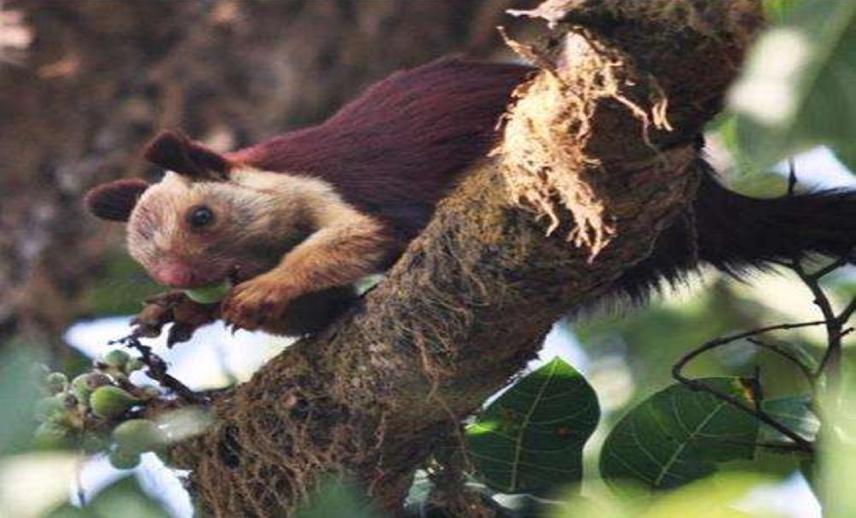Prachi Mehta
A survey will be carried out to assess the status and distribution of the Malabar Giant Squirrel (Ratufa indica) and to determine factors affecting its survival in Northern Western Ghats, Maharashtra in India.
The Indian or Malabar Giant Squirrel (Ratufa indica) is a large bodied, mostly solitary and completely arboreal squirrel distributed in peninsular India. It weighs up to 1.4 kg and along with its tail is about 50 to 80 cm in length. It has short round ears and brown-red dorsal body and buff ventral body. Its long bushy tail is used efficiently for balancing on the trees.

The Malabar Giant Squirrel requires tall mature trees with abundant branching and continuous tree canopy. Their dependence on mature forests is clearly indicative of its ecological requirements. Being strictly arboreal, they need to travel between trees for feeding, breeding and nesting. They feed on fruits, flowers, nuts, seeds, leaves, barks of trees, insects and even bird eggs while on the trees. Their nests are large, globular made of twigs and leaves located in sub-canopy of trees.
The Western Ghats of India are included in the “global biodiversity hotspot” category by the IUCN owing to its uniquely rich assemblage of fauna and flora. The Malabar Giant Squirrel is one such species and is endemic to the region. It is listed in Schedule II of Indian Wildlife (Protection) Act, 1972 and Appendix II of CITES (2005). Although giant squirrels are widely distributed along the region, their population is showing a declining trend, especially in Northern Western Ghats of Maharashtra. The main reason for this is fragmentation and degradation of their habitat and poaching of the squirrel by local people. As a result of this, two of its sub species, namely R.i. dealbata and R.i. bengalensis have become extinct from Western Ghats. This indicates the vulnerability of the species and its inability to survive in modified landscapes.
This project is formulated with an overall goal for long-term conservation of giant squirrel in entire Western Ghats. In the first phase of this project, we will carry out an intensive survey for giant squirrels in Protected Areas and Reserved Forests of northern Western Ghats. The results of the survey will yield information on current distribution, status and density estimate of giant squirrel in the area. During the survey, anthropogenic pressures on the habitat and population of giant squirrel will be examined to identify vulnerable population that are in immediate need of conservation inputs. The next phase of the project will aim to develop a site-specific conservation program for protection of giant squirrel with the support of local community.